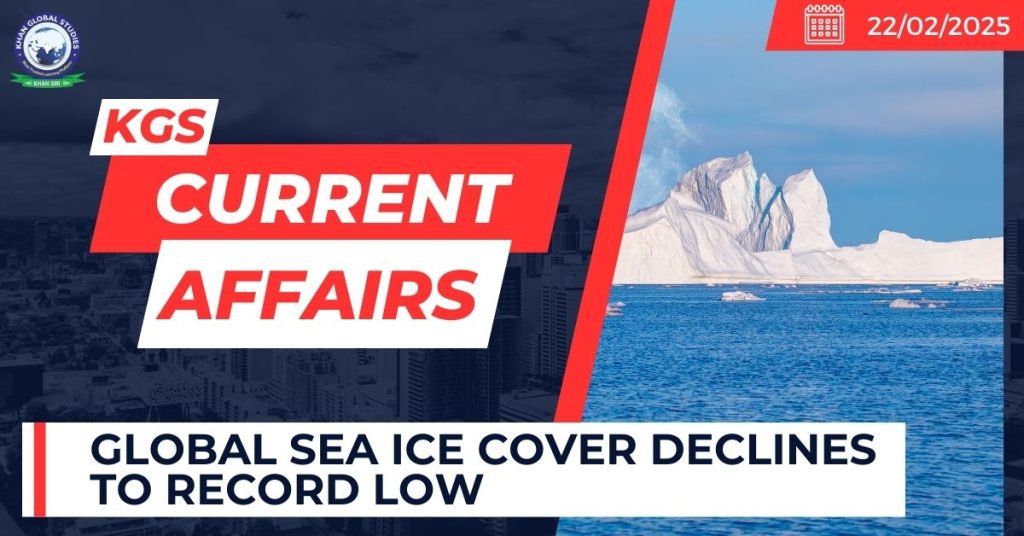Context:
Recently, the combined extent of Arctic and Antarctic sea ice dropped to a record low of 15.76 million sq km, marking a decline from the previous low of 15.93 million sq km in 2023, based on data from the US National Snow and Ice Data Center (NSIDC).
Sea Ice
- Sea ice is frozen seawater that floats on the ocean surface.
- It forms in both the Arctic and the Antarctic in each hemisphere’s winter; it retreats in the summer, but does not completely disappear.
This floating ice has a profound influence on the polar environment, influencing ocean circulation, weather, and regional climate
Key points regarding decline:

- Arctic sea ice has reached its lowest recorded extent for the time of year, continuing a long-term trend of shrinking ice.
- Between 1981-2010, the Arctic sea ice extent decreased by 12.2% per decade, with September recording the minimum ice extent.
- While Antarctic sea ice levels slightly increased until 2015, between 2014-2017, there was a significant loss of 2 million sq km, a reduction four times the size of Spain.
- In 2023, Antarctic sea ice reached historically low levels, 2 million sq km below the normal extent, and 1.55 million sq km below the 1981-2010 average in 2024.
Factors Behind the Decline:
- The dip in sea ice is linked to a combination of warm air, warmer seas, and wind patterns breaking apart the ice.
- Antarctic ice is particularly vulnerable to ice-breaking winds, and warmer ocean temperatures during the southern hemisphere summer (December-February) have intensified the melting of the ice shelves.
- In the Arctic, the delayed freezing of Hudson Bay, caused by unusually warm oceans, and storms that broke apart ice in the Barents and Bering Seas, contributed to the low ice levels.
- The Arctic’s thinner, more fragile ice is increasingly susceptible to breaking due to storm activity.
Impact on Global Climate:
- Loss of sea ice affects ocean circulation, reducing salinity and density in surface waters, which can disrupt global climate patterns and marine ecosystems.
- Sea ice plays a crucial role in reflecting sunlight back into space, cooling the planet by preventing excess heat from being trapped in the atmosphere.
- The continued loss of sea ice cover could lead to severe long-term consequences for Earth’s climate, including accelerated global warming and disruptions in oceanic and atmospheric systems.

